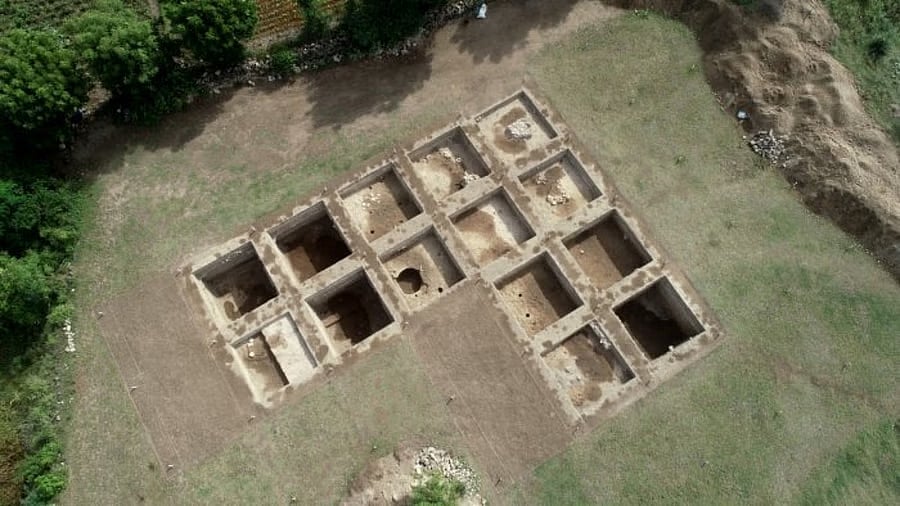
The Keeladi site.
Credit: TNSDA
Chennai: Inhabitants of Keeladi, a Sangam Era site near Madurai that is about 2,600 years old, primarily relied on cattle rearing and agriculture, with substantial evidence indicating that the society was deeply involved in animal husbandry, according to a new report by the Tamil Nadu State Department of Archaeology (TNSDA).
Studies on pollen and Phytoliths by the French Institute of Pondicherry, the Birbal Sahni Institute of Palaeosciences, Lucknow, and Deccan College, Pune, have shed light on the culinary habits, agricultural practices, domesticated animals, crops, wild animals, and the environment that prevailed during the Sangam Age.
The Sangam Age was pushed back by three centuries from what was previously believed in 2019, when carbon dating of artefacts unearthed at Keeladi indicated a date of 585 BCE.
Keeladi provides archaeological evidence of the literature-rich Sangam Age. The excavations, which began in 2014 by the Archaeological Survey of India (ASI), were taken over by the TNSDA in 2017. In total, 10 phases of digging have taken place in the village.
The report, written by renowned academic K Rajan and archaeologists R Sivananthan and V P Yathees Kumar, said the analysis of organic residues from grave goods at Konthagai, believed to be the burial site of Keeladi, provides significant insights into the food practices of ancient Tamils, who consumed meat as well as many greens and fruits.
The study, conducted by the Ancient DNA Lab established at Madurai Kamaraj University using Gas Chromatography-Mass Spectrometry (GC-MS), found traces of cholesterol, indicating the processing of animal fat, and fatty acids, indicating the usage of plant and dairy-related products.
“The study identified a wide array of plant-based ingredients in use, including turmeric, coriander, ginger, garlic, cumin, tamarind, bottle gourd, bitter gourd, moringa, neem, various greens, banana, jujube, custard apple, and pomegranate. Additionally, evidence suggests the use of groundnut oil, coconut oil, and palm oil,” the authors wrote.
Key food items identified include rice, black gram, millets (thinai and cholam), milk, and butter, while numerous date fruits were discovered in the offering pots and paddy grains were specifically found in burial urns, providing a glimpse into their dietary staples.
Metallurgical analysis of iron artefacts recovered from Keeladi by the Vellore Institute of Technology (VIT) and IIT Gandhinagar provides compelling evidence of advanced iron-working techniques that align with descriptions found in Sangam literature.
The development assumes significance as it comes close on the heels of findings that iron implements found at Sivagalai, located on the left bank of the Thamirabarani River, have been dated to 3345 BCE—making this the earliest known date for smelted iron not just in India, but anywhere in the world.
These dates have pushed the introduction of smelted iron in India back by over a millennium compared to previous estimates, positioning the region as a pioneering hub of early metallurgy, surpassing global timelines.